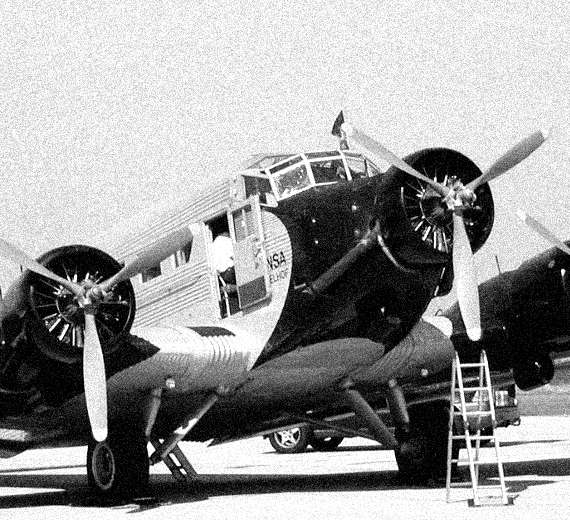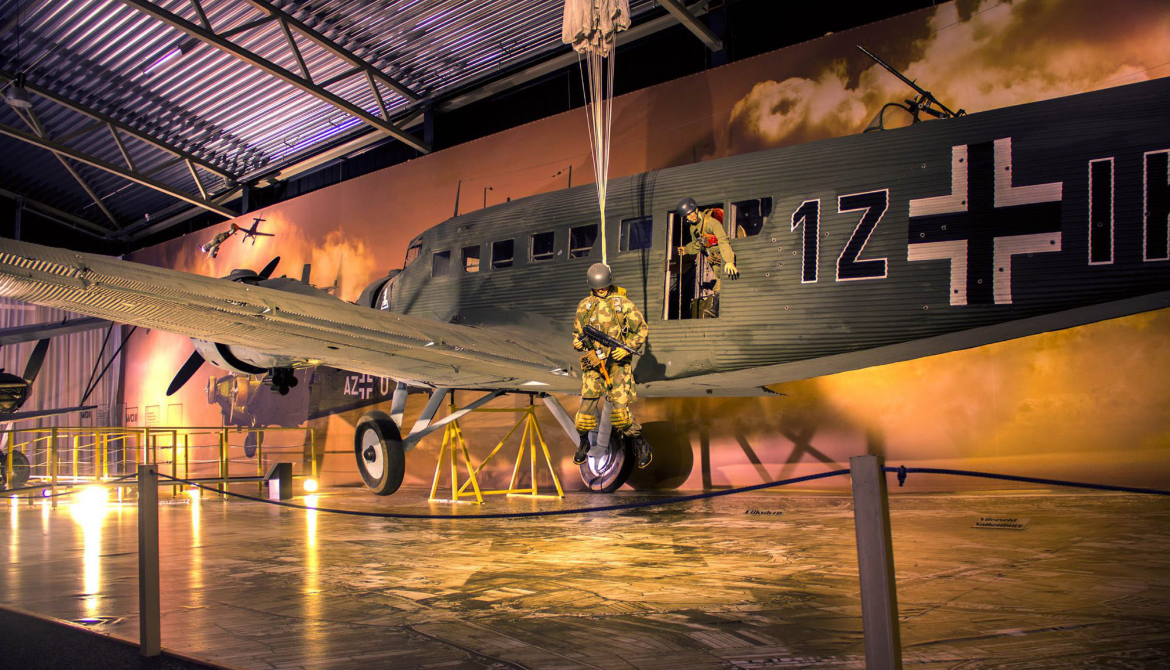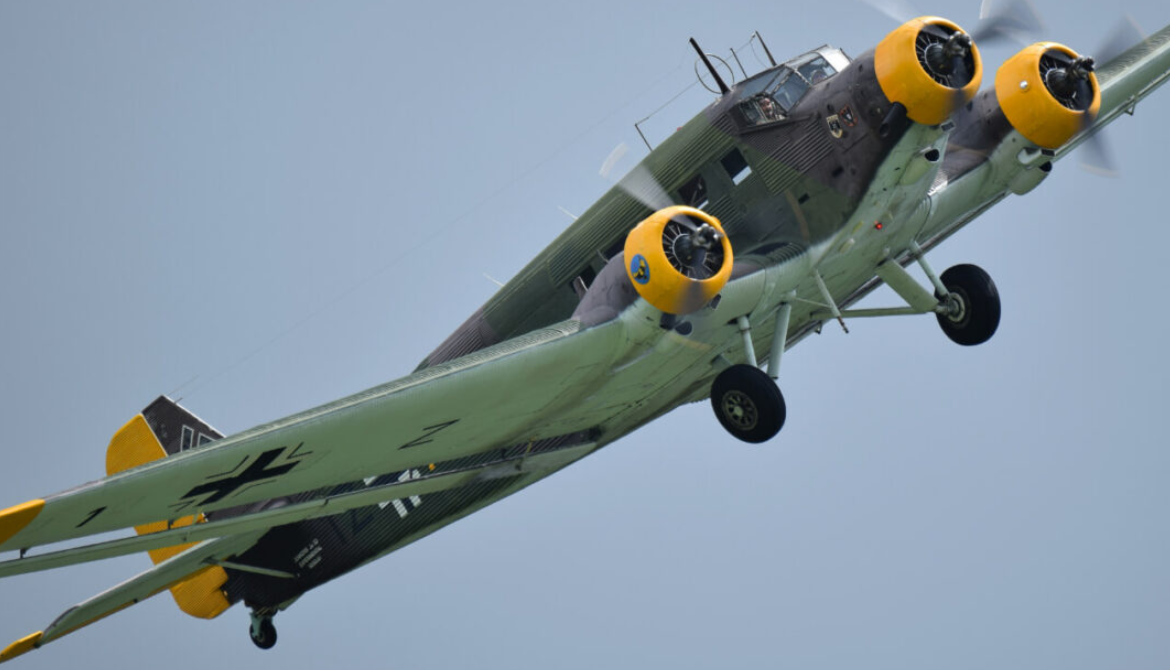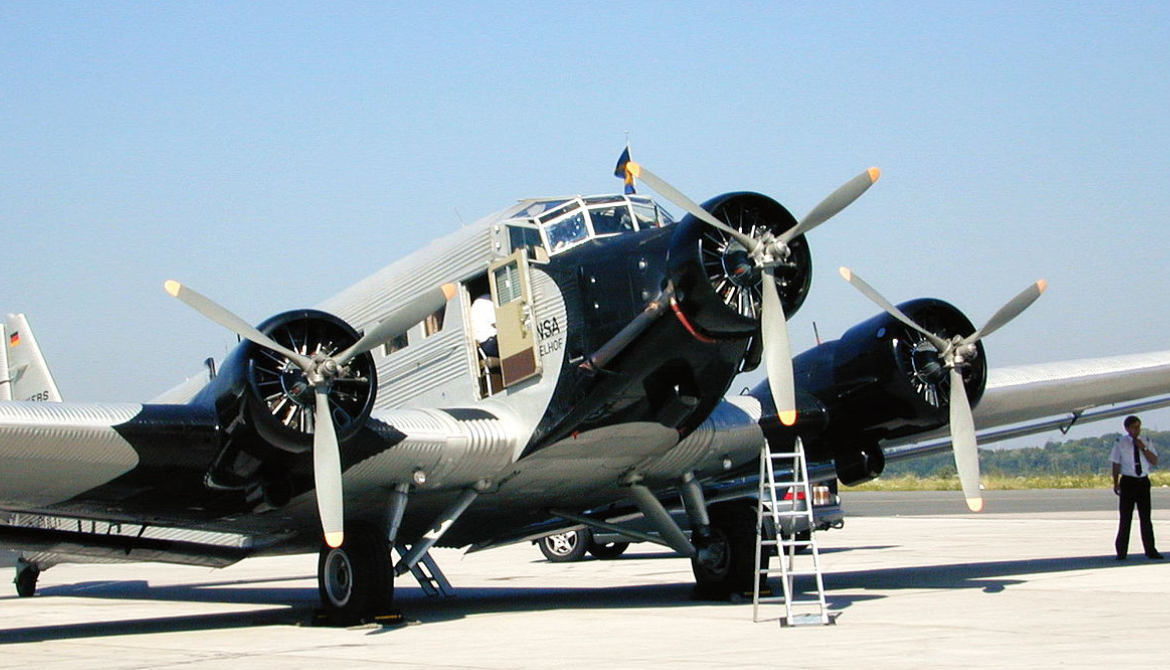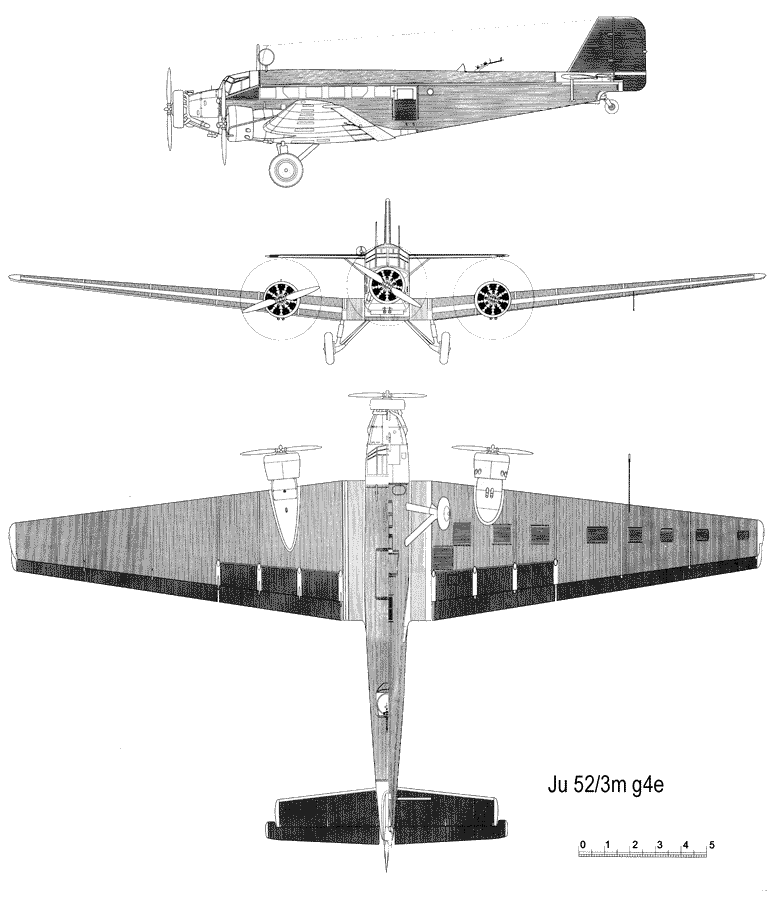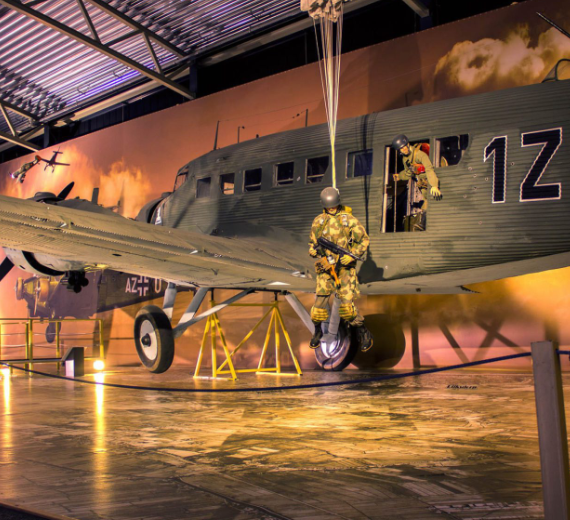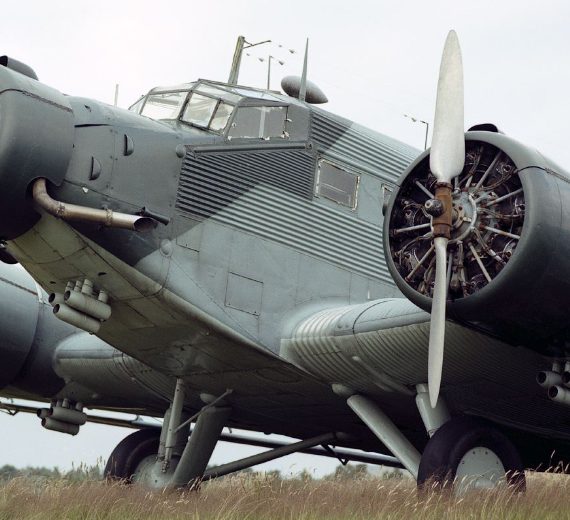Junkers
Ju 52/3m "Iron Annie"
Role Transport aircraft, medium bomber, airliner
Manufacturer Junkers
Designer Ernst Zindel
First flight 13 October 1930 (Ju 52/1m);
7 March 1932 (Ju 52/3m)
Status In limited use
Primary users Luftwaffe
Luft Hansa
Spanish Air Force
Bulgarian Air Force
Produced 1931–1945 (Germany)
1945–1947
(France)
1945 –1952 (Spain)
Number built 4,845
.
History Junkers Flugzeug- und Motorenwerke AG JFM
Junkers Ju 52/3m "Aunt Ju"

The Junkers Ju 52/3m (nicknamed Tante Ju ("Aunt Ju") and Iron Annie) is a transport aircraft that was designed and manufactured by German aviation company Junkers.
Development of the Ju 52 commenced during 1930, headed by German aeronautical engineer Ernst Zindel. The aircraft's design incorporated a corrugated duralumin metal skin as a strengthening measure, which was very unusual at the time. The Ju 52's maiden flight was performed on 13 October 1930.
The Ju 52 was similar to the company's previous Junkers W 33, although larger. In 1930, German aeronautical engineer Ernst Zindel and his team designed the Ju 52 at the Junkers works at Dessau. According to aviation author J. Richard Smith, the Ju 52 directly drew upon the company's First World War-era Junkers J 1 - the world's first all-metal aeroplane..
Design
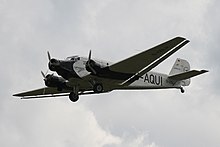
The Ju 52 had a low cantilever wing, the midsection of which was built into the fuselage, forming its underside. It was formed around four pairs of circular cross-section duralumin spars with a corrugated surface that provided torsional stiffening. A narrow control surface, with its outer section functioning as the aileron, and the inner section functioning as a flap, ran along the whole trailing edge of each wing panel, well separated from it. The inner flap section lowered the stalling speed and the arrangement became known as the Doppelflügel, or "double wing". The outer sections of this operated differentially as ailerons, projecting slightly beyond the wingtips with control horns. The strutted horizontal stabilizer carried horn-balanced elevators which again projected and showed a significant gap between them and the stabilizer, which was adjustable in-flight. All stabilizer surfaces were corrugated.

The Ju 52 featured an unusual corrugated duralumin metal skin, which had been pioneered by Junkers during the First World War; the corrugation served to strengthen the whole structure over a smoother approach. The fuselage was of rectangular section with a domed decking, comprising a tubular steel structure that was entirely covered by the corrugated metal skin. A port-side passenger door was placed just aft of the wings; this entrance also acted as a loading hatch for freight, the lower half functioning as a platform to ease cargo movements. The cabin had a dimensional capacity of 590 cubic feet, and was lined with numerous windows stretching forward to the pilots' cockpit. The main undercarriage was fixed and divided; some aircraft had wheel fairings, others did not. A fixed tailskid, or a later tailwheel, was used. Some aircraft were fitted with floats or skis instead of the main wheels.
0
KmCeiling
0
KmCombat RANGE
0
Km/hAircraft Speed
0
Max Crew
Photo Gallery
Junkers Flugzeug- und Motorenwerke AG JFM
Junkers Ju 52/3m "Aunt Ju"


Junkers Flugzeug- und Motorenwerke AG JFM
Junkers Ju 52/3m "Aunt Ju"
General Info
-
-
- Crew: Two
- Capacity: 17 passengers
- Length: 19 m (62 ft)
- Wingspan: 29 m (96 ft)
- Height: 5.5 m (18.2 ft)
-
Powerplant
-
- Wing area: 110.50 m2 (1,189.4 sq ft)
- Empty weight: 5,720 kg (12,610 lb)
- Gross weight: 9,500 kg (20,944 lb)
- Max takeoff weight: 10,499 kg (23,146 lb)
- Powerplant: 3 × BMW 132A-3 9-cylinder air-cooled radial piston engines, 541 kW (725 hp) each for take-off (525 PS)
- Propellers: 2-bladed variable-pitch propeller
-
Performance
- Maximum speed: 265.5 km/h (165.0 mph, 143.4 kn) at sea level
-
-
- 276.8 km/h (172.0 mph; 149.5 kn) at 910 m (3,000 ft)
-
- Cruise speed: 246 km/h (153 mph, 133 kn) maximum continuous at 910 m (3,000 ft)
-
-
- 209 km/h (130 mph; 113 kn) economical cruise
-
- Range: 998 km (620 mi, 539 nmi)
- Service ceiling: 5,900 m (19,360 ft)
Armament
-
- Guns: * 1 × 7.92 mm (0.312 in) MG 15 machine gun or 13 mm (0.51 in) MG 131 machine gun in a dorsal position
- 1 × 7.92 mm (0.312 in) MG 15 machine gun in a semi-retractable dustbin turret
- Bombs: up to 500 kg (1,100 lb) of bombs
.
Links to Youtube & Others
During its service with Luft Hansa, the Ju 52 had proved to be an extremely reliable passenger airplane. This positive experience contributed to its adoption by the Luftwaffe as a standard aircraft model.
Junkers Ju 52/3m
"Aunt Ju"
Lightly armed, and with a top speed of only 265 km/h (165 mph) — half that of a contemporary Hurricane — the Ju 52 was very vulnerable
Youtube Link
The Colombian Air Force used three Ju 52/3mde bombers equipped as floatplanes during the Colombia-Peru War in 1932–1933.
